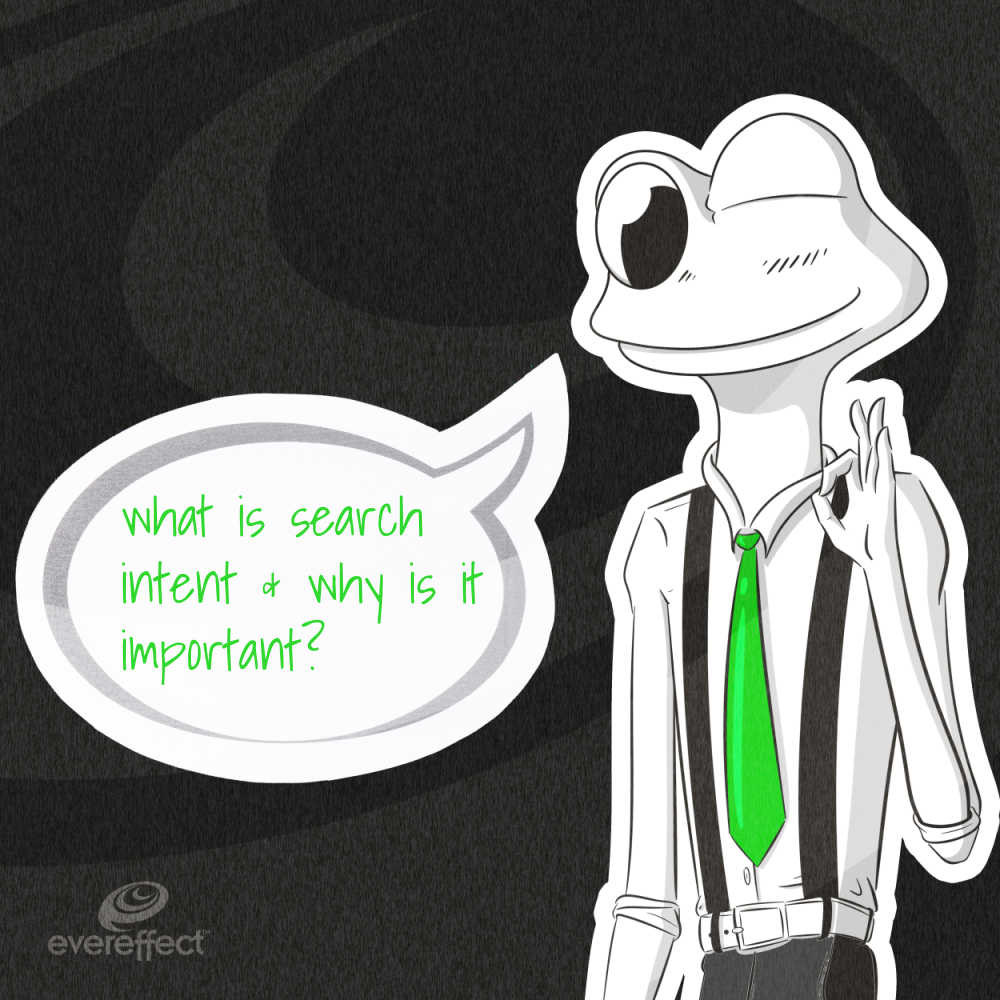What is Search Intent & Why is it Important?
Are you not ranking in the TOP 10 SERPs despite having a high DR (Domain Rating) and providing high-quality and substantive content? The problem isn’t about E-E-A-T standards but refers to users’ search intent. You shouldn’t guess what type of content to write. You must know it!
In this article, you’ll discover:
- What is search intent?
- Why is search intent necessary?
- What are the most popular types of search intent?
- How to determine search intent?
- What is the importance of SEO when we discuss search intent?
96.55% of content on the Internet doesn’t receive traffic from Google. You can’t be among these sites if you want to create a profitable business! With our help, you won’t be left with nothing. Read today’s article, and check how to optimize your website for search intent!
What is Search Intent? A Comprehensive Overview!
Search intent (also user intent or query intent) is the reason why your customers search specific keywords or queries in search engines like Google, Bing, Yahoo, DuckDuckGo, etc.
Search Engine users enter keywords in Google for definite goals. It might be a desire to:
- reach a specific website (it’s navigational intent),
- get additional knowledge (it’s informational intent),
- do a market research (it’s commercial intent),
- buy a product or order a service (it’s transactional intent).
In many cases, we can discern search intent for given keywords immediately.
For example, if you do SEO keyword research and see that many people’s queries are about “Best drones with camera”, it’s a crucial signal means users are considering purchasing. After reading the rankings, they’ll probably be ready to spend money on certain drone types.
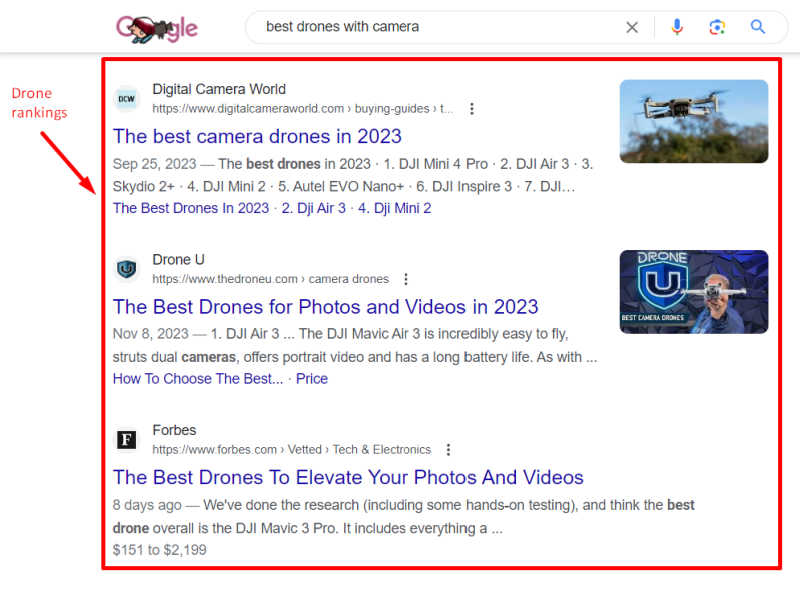
Comprehensive drone rankings.
As you might have guessed, “Best drones with camera” should be a ranking in a type of blog article. When you want to rank in SERPs (Search Engine Results Pages) for category or product pages, we recommend changing the keyword – from commercial intent to transactional intent. You can use “Camera drones,” “Camera drones pricing,” or “Cheap camera drones.” You won’t boost your category/product page in organic search results if you don’t change the keyword.
However… changing keywords for specific search intent isn’t always clear. Some cases have proven that commercial intent and transactional intent can be mixed.
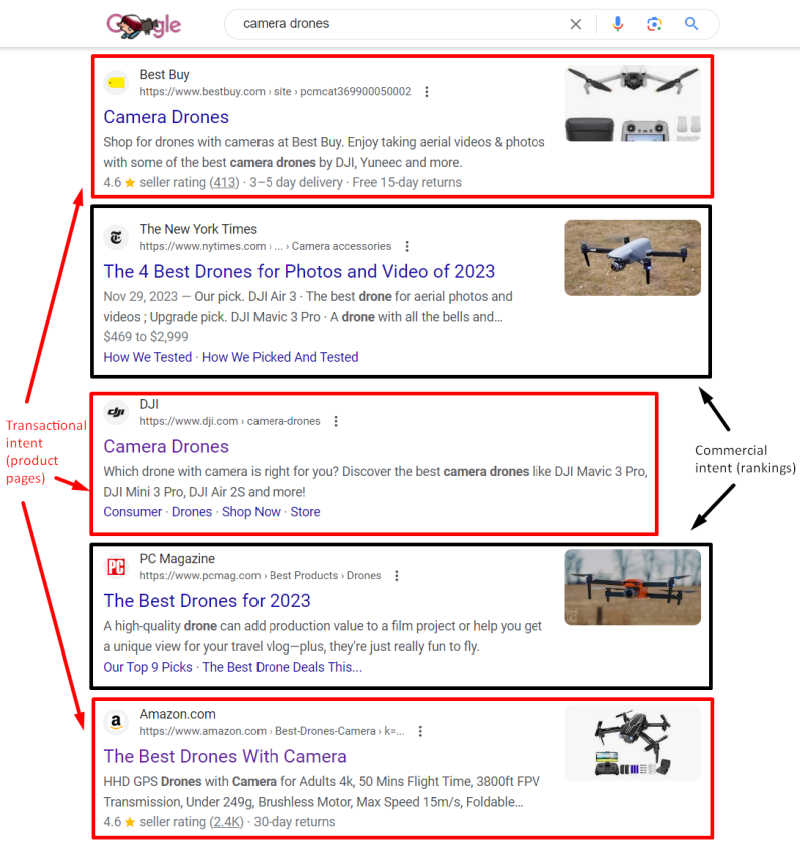
Mixed search intent Google.
As you see, we have three product pages and two blog posts with rankings for “Camera drones” (Amazon offers only products – it’s a product page). If you scroll down, you’ll also see mixed results – rankings and product pages.
It’s simple to explain.
The rankings have a standard structure for blog articles with many references to purchase. Due to this, customers who want to buy the product may end up on the ranking and still make a fast purchase (even more consciously than using the product page).
Google treats rankings as mini-product pages with a lot of educational content to help users buy drones. This is why search intents (primarily commercial and transactional intent) sometimes get mixed up.
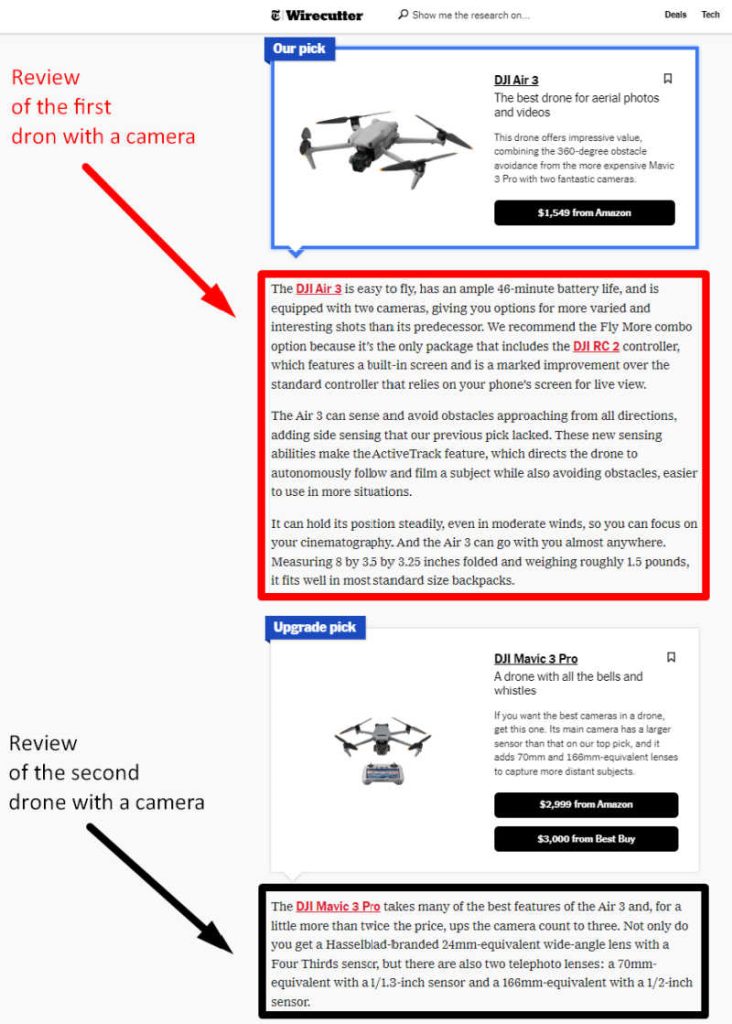
Drone educational rankings.
There only needs to be two clicks from the user to buy the drone. The first click is to choose a drone from the ranking, and the second is to click on the “Buy now” button” from the product page.
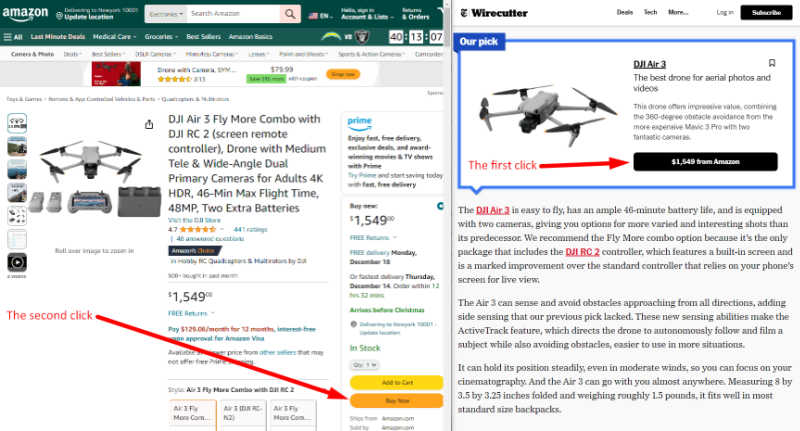
Buying the drone from the ranking page (commercial/transactional intent).
When opening Best Buy’s product page, you can instantly buy the product without reading comprehensive reviews. That can be the plus or minus – it depends.
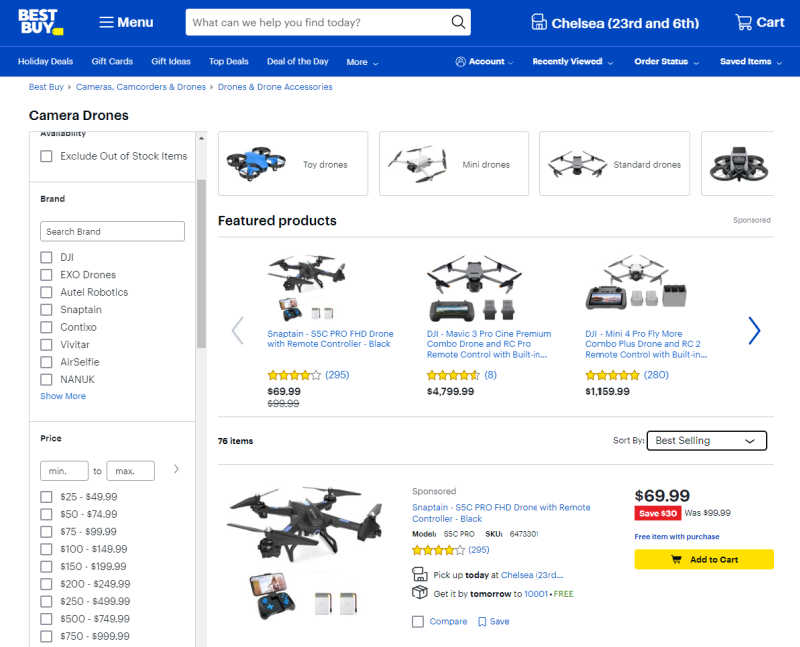
Best Buy’s product page (only transactional intent).
The significant thing that you need to know is… Google chooses search intent based on users’ interpretations.
For example, If you enter “Apple” into Google, you’ll see the technology company.
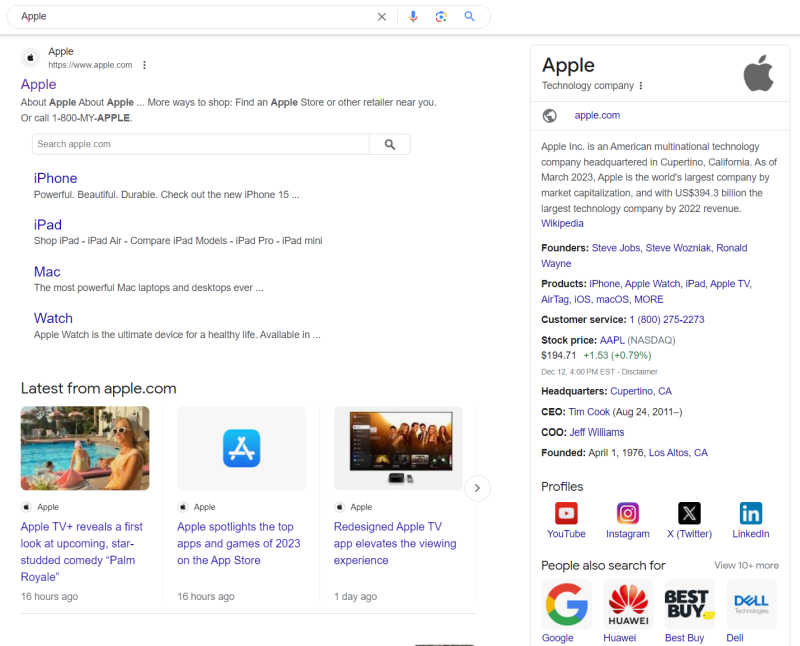
Search intent for “Apple.”
Yet, the organic search results for “Strawberry” are totally different because people don’t find a company based on that query.
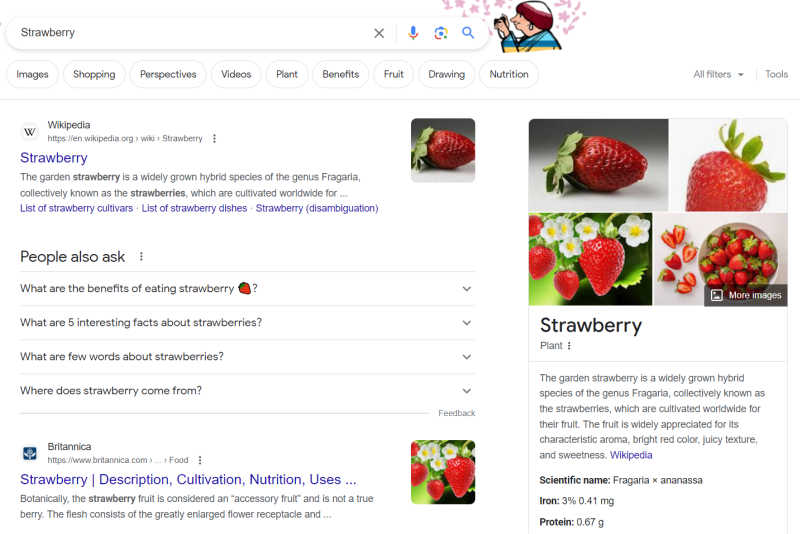
Search intent for “Strawberry.”
The last example refers to “Mercury”. The user intent about that keyword might refer to:
- Planet,
- Chemical element,
- Boat engine company,
- Insurance company.
We can predict what type of search intent we get after entering “Mercury” to Google.
Informational intent, because most people are interested in… the planet!
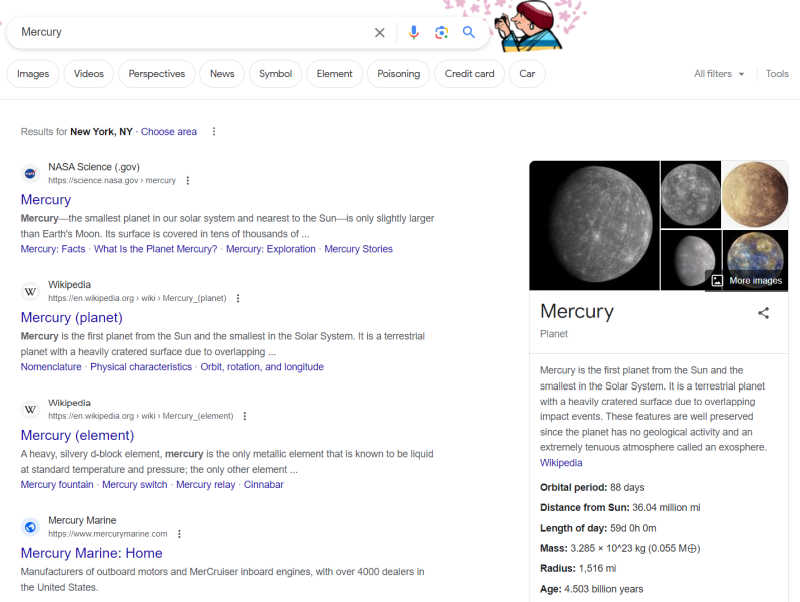
Search intent for “Mercury.”
Now, your understanding of search intent is higher than before, but you’re not an expert yet. To leverage your knowledge, dive deep into our article and learn why search intent is important for the success of your business!
Why is Search Intent Important?
Understanding search intent of Google’s users will make it easier for you to determine what type of content you need to create FIRSTLY.
Where’s the catch?
We are entering a higher level now. It’s not enough to recognize the 4 basic types of search intent (navigational, informational, commercial, transactional).
You also need to know (not guess) in what form your content should be published (as a video, blog post, or product/category page).
What it depends on? We’ll show this in a simple (even trivial) example.
Let’s say you’ve selected an informational intent query, “How to repair washing machine.” You’re probably thinking now that there’s no point in waiting; writing a blog article will definitely fulfill the search intent!
Nothing could be further from the truth!
Before you start creating content, look at the TOP 10 SERPs! ALWAYS. In some cases, the most valuable guides are based on YouTube videos (rather than blog articles).
When checking the SERPs on “How to repair washing machine,” we get a straightforward conclusion: videos are the best idea!
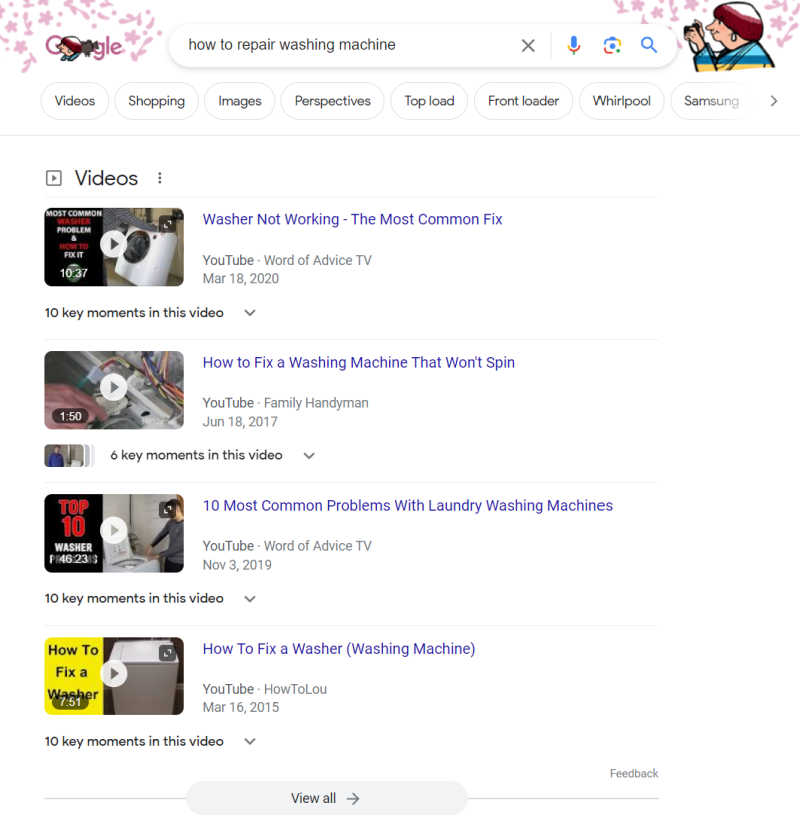
Video content that satisfied users’ intent for “How to repair washing machine.”
The rest of the organic search results for the mentioned keywords refer to blog articles; however, you need to create a video to rank at the TOP of the search results.
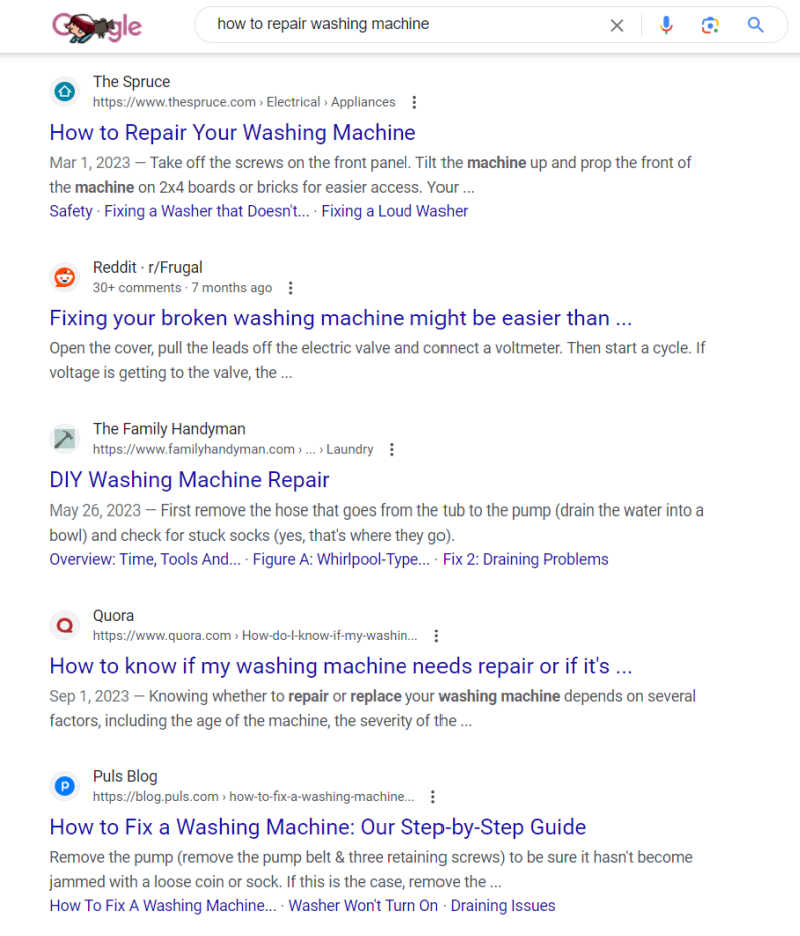
Informational content that is less worthwhile than videos for “How to repair washing machine.”
When videos dominate the SERPs, we recommend creating a YouTube video first and then preparing a comprehensive article. If you take care of a high topical authority level in your article, you’ll probably rank in the TOP 5 SERPs. The highest positions in Google are crucial for your business. As we learn from the Serp Watch SEO statistics, about 67.6% of clicks in search engine results are concentrated on the first five entries displayed on the initial page.
Most Popular Types of Search Intent – TOP 4
What are the most popular types of Search Intent?
1. Navigational intent (I want to reach out)
Navigational search queries come from people who are looking for concrete things. It might be a specific website (KFC), social media account (Phil Libin LinkedIn), or phone number to Three’s staff (Three contact), etc.
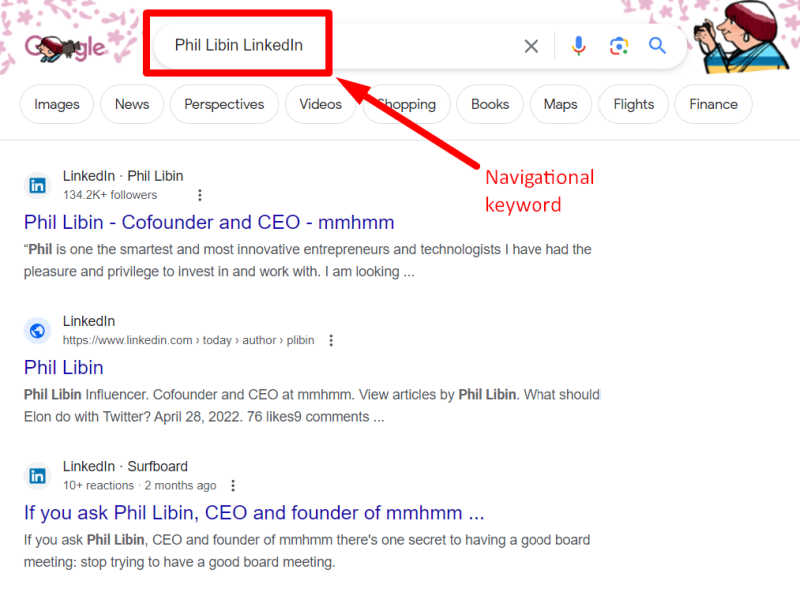
Navigational keyword.
Potential customers using navigational keyword intent may be on various sales funnel levels.
Some might want to choose the shorter way to KFC; others may want to buy a new keyboard, e.g., by searching for the “Apple” keyword.
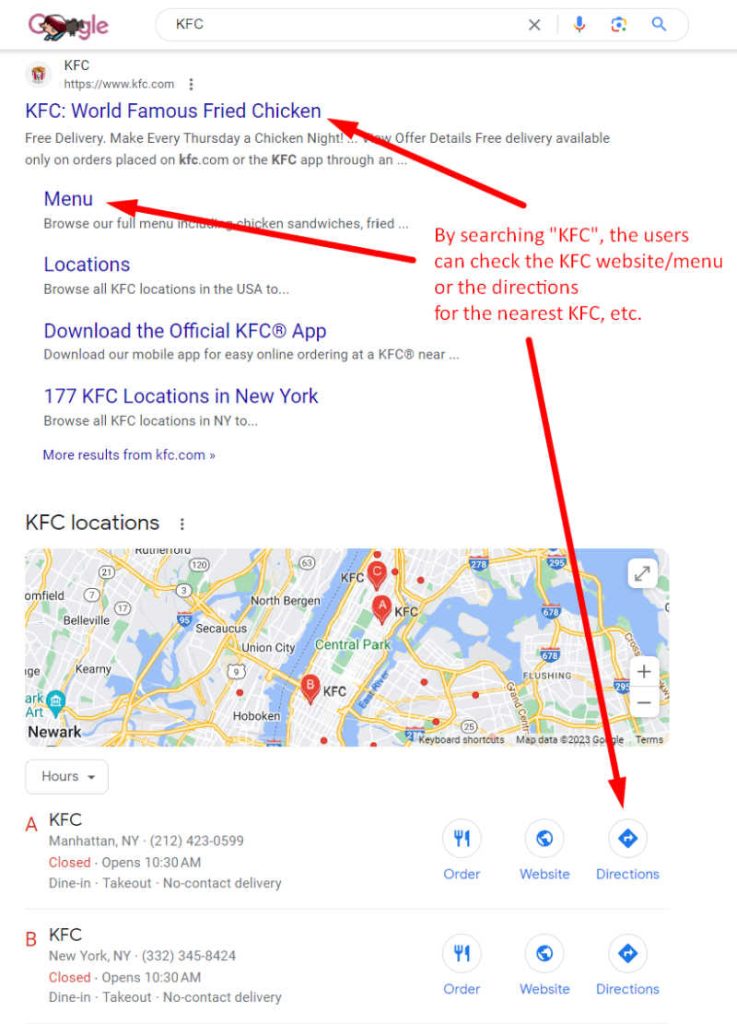
KFC – the popular navigational intent keyword.
Navigational Google search intent examples (Login/Hours/Store/Sign-in):
- Chris Bross’ LinkedIn,
- EverEffect blog,
- Netflix login,
- YouTube,
- Gmail sign-in,
- Amazon,
- Apple Store.
2. Informational intent (I want to know/do it)
Users enter informational keywords when they want to extend their knowledge. That type of intent is crucial in many cases because it means a first customer impression with a given company. Consequently, if you create a high-quality “how-to” guide or record a helpful video, you’ll get that customer in the future.
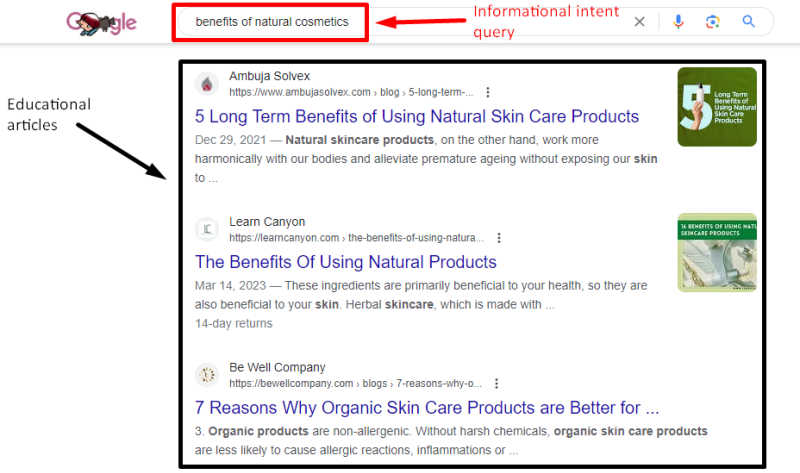
Informational intent query.
Search engine users often want to know how to cook something (e.g., cookies).
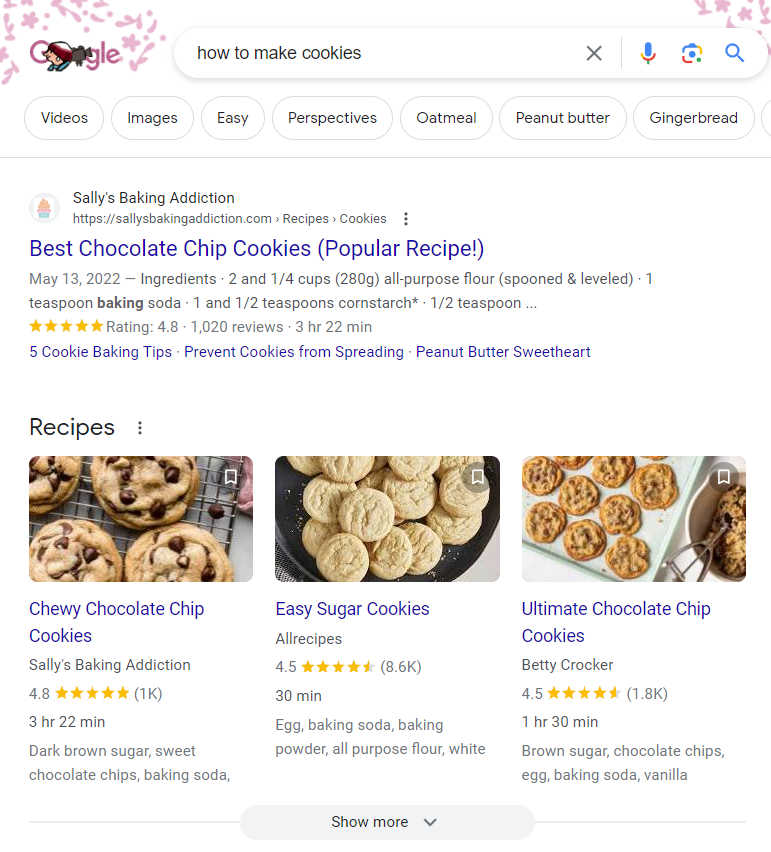
Cooking guide in the SERPs.
To be visible in the Recipes section, use Schema Markup Generator (JSON-LD).
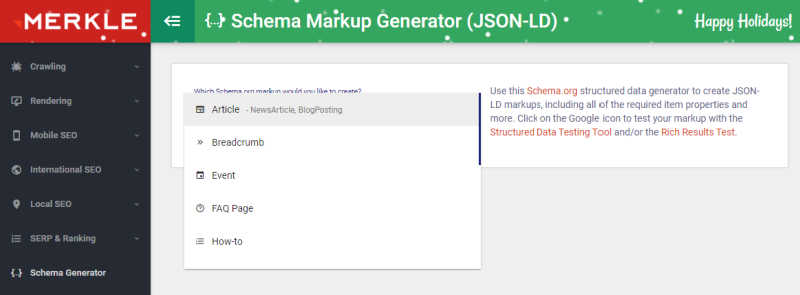
Schema markup generator from Technical SEO. Source: www.technicalseo.com/tools/schema-markup-generator/
Want to learn more about GTA 6? So, enter “GTA 6” in Google.
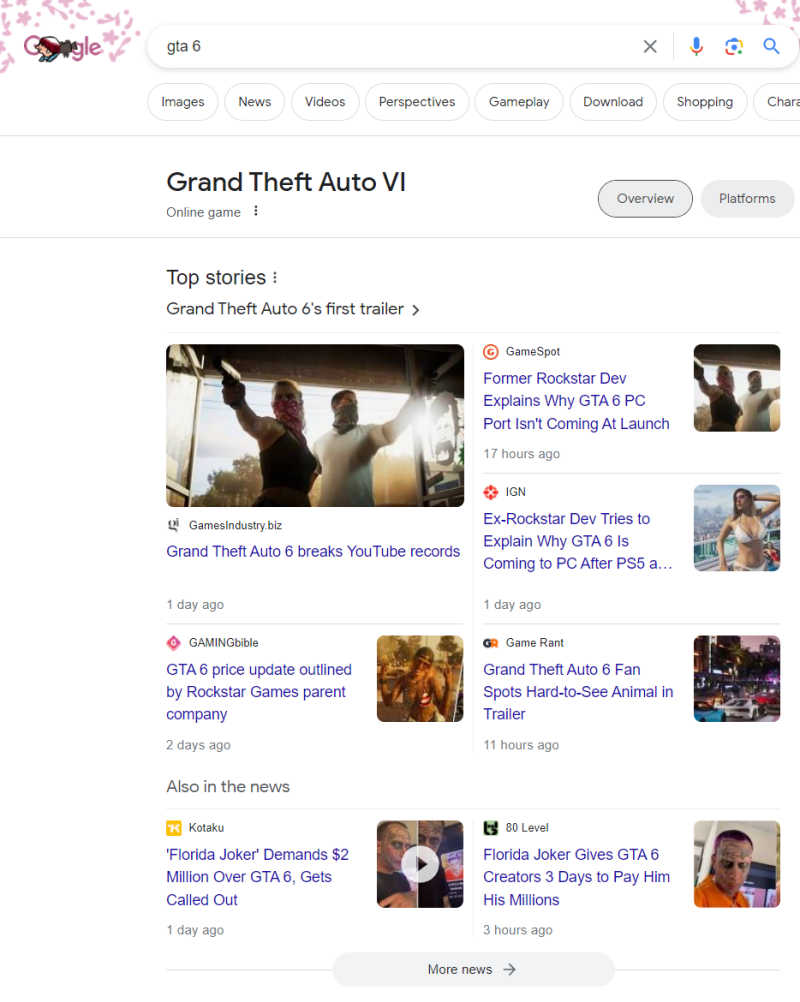
Example of informational intent for “GTA 6” keyword.
Informational Google search intent examples (Who/Guide/What/How/When):
- Why is it worth getting vaccinated?
- How to make cookies?
- How old is Cristiano Ronaldo?
- What is topical authority?
- Recipe for blackcurrant juice,
- London Eye,
- GTA 6.
3. Commercial intent (I need to prepare for my future buying)
Commercial search intent means considering. When potential customers want to invest in a specific product or a service, they use search terms like “Best,” “Review,” “Top,” or “Vs.” This is the last stage of the shopping funnel before the purchase.
Let’s look at SERPs!
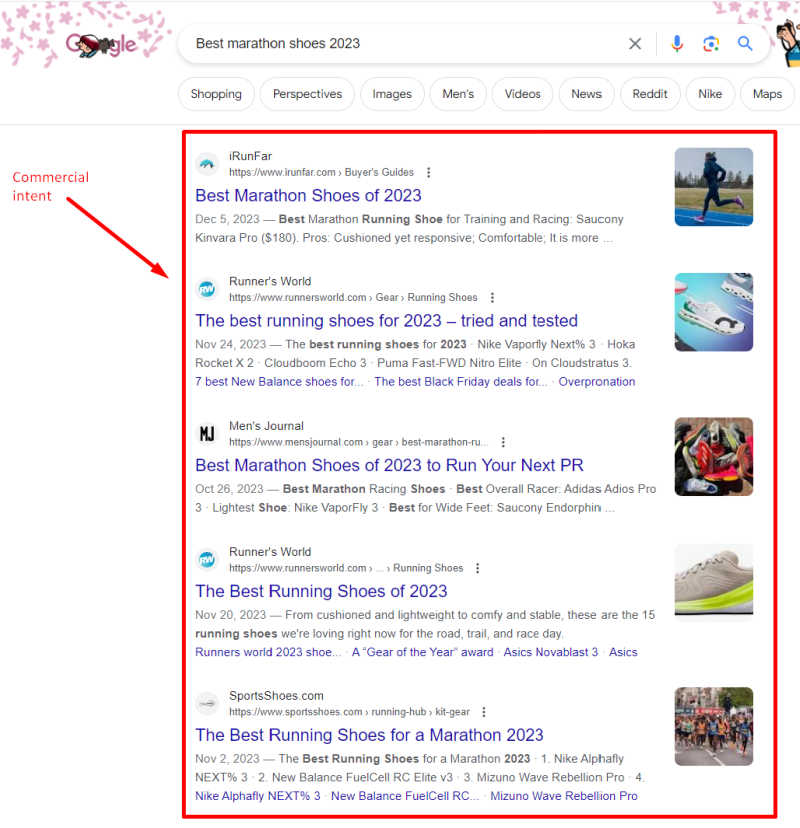
Commercial intent SERPs example.
The fact that the user is preparing to buy doesn’t mean he cannot quickly buy. Commercial intent pages with rankings, reviews, or comparisons are structured so that, in addition to the educational form, they have sales aspects like “$250 at Amazon” (after substantive content with hints for potential buyers).
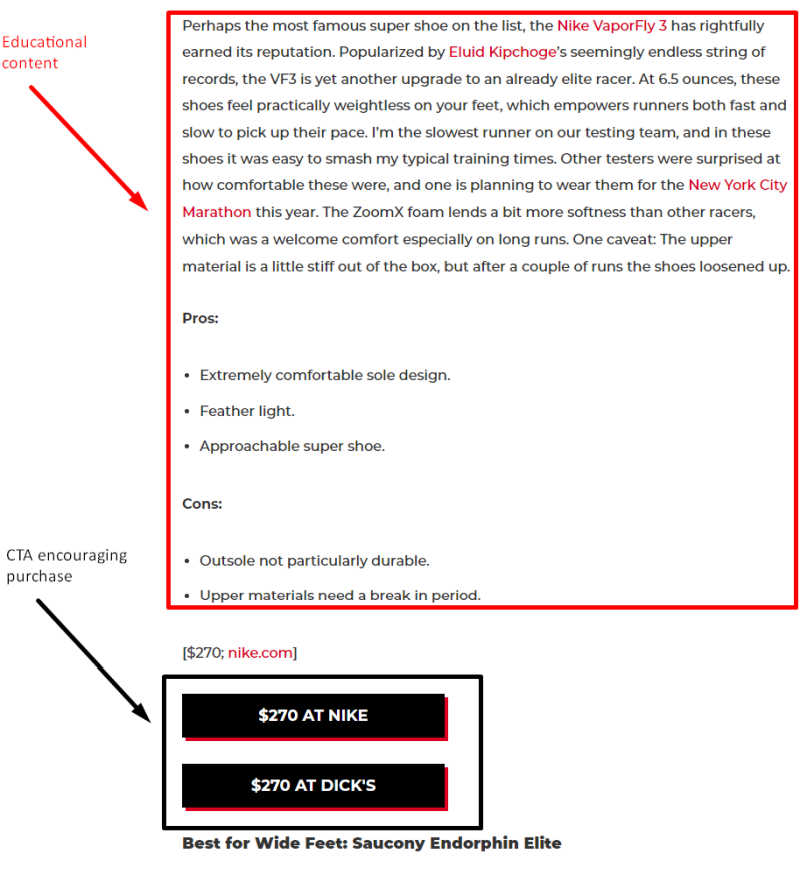
Commercial intent = educational content + CTA encouraging purchase.
Commercial Google search intent examples (Best/Review/Top/Vs.):
- Huawei P60 Pro review,
- Best marathon shoes 2023,
- Online digital marketing courses,
- Apple Watch Ultra alternatives,
- Auto insurance quotes compare,
- Discounted hotel rooms in California,
- iPhone SE 3rd gen vs. Samsung a54.
4. Transactional intent (I want to buy the product/order the service)
Our favorite! Transactional search intent targets the most profitable audience! People entering transactional keywords are undoubtedly the closest to purchasing. However, it doesn’t mean they will buy from your product/service page because:
- You should offer relevant pricing,
- Customers need high-quality products/services that meet the actual industry trends,
- Your website should take a maximum of 2-3 seconds to load (Based on Blogging Wizard research, the typical loading time for a webpage is approximately 3.21 seconds),
- You should implement a streamlined buying process limited to just a few steps (otherwise, customers will visit your competitors).
Therefore, remember that only when you polish your e-commerce you’ll be able to compete with market leaders!
Okay, so let’s assume you have a quality and strong domain with a high DR (Domain Rating). You’ve just created transactional content and… appear in the TOP 10 SERPs.
What does the customer see?
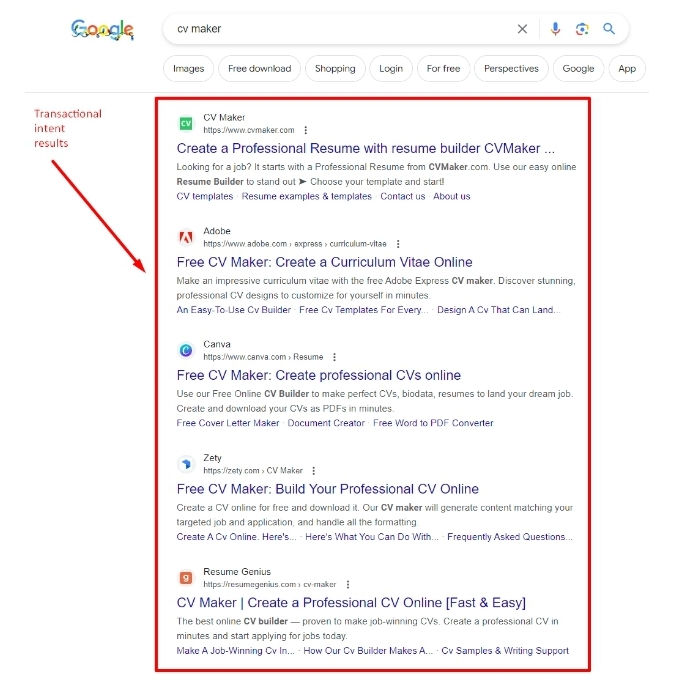
Transactional intent results for “CV maker.”
Google, in this case, doesn’t show “Why do you need a resume builder” or “Resume builders pros and cons” content because by searching for “CV maker,” users want to create a CV. In consequence, even the highest quality content on Google nothing works when you prepare the wrong type of text (e.g., informational or commercial like “Best online resume builders”).
Transactional Google search intent examples (Order/Cheap/Buy/Coupon):
- iPhone 15 pricing,
- CV maker,
- Backlink checker,
- Order pizza in New York,
- SPA coupons,
- Cheap flights from NY,
- Cheap Mustang GT.
How to Determine Search Intent?
You should analyze the search intent for every single query. After conducting comprehensive keyword research (e.g., in the Ubersuggest tool), go to Google and enter the main keywords you’ll use to create the content.
Don’t stop there.
Next, look at the first five or ten organic search results to ensure that the “Best” keyword refers to commercial intent but not transactional. Why do we mention this? So that you don’t get confused by Google search results, which aren’t always too obvious.
For example, “Best books of all time” should have commercial intent. When users want to consider potential purchases and know more about concrete products or services, use “Best, “Review,” “Top,” Vs.”.
So, should you create a blog article, not a product page? Mostly yes.
But as SERPs show, not always, because for “Best books of all time,” we have 2 product pages and 8 blog articles. The conclusion is simple: You still need to write a blog article to rank in the TOP 10, but when you have a domain as strong as Amazon, you can rank in the TOP 10 SERPs for the product page (we don’t recommend practicing this).
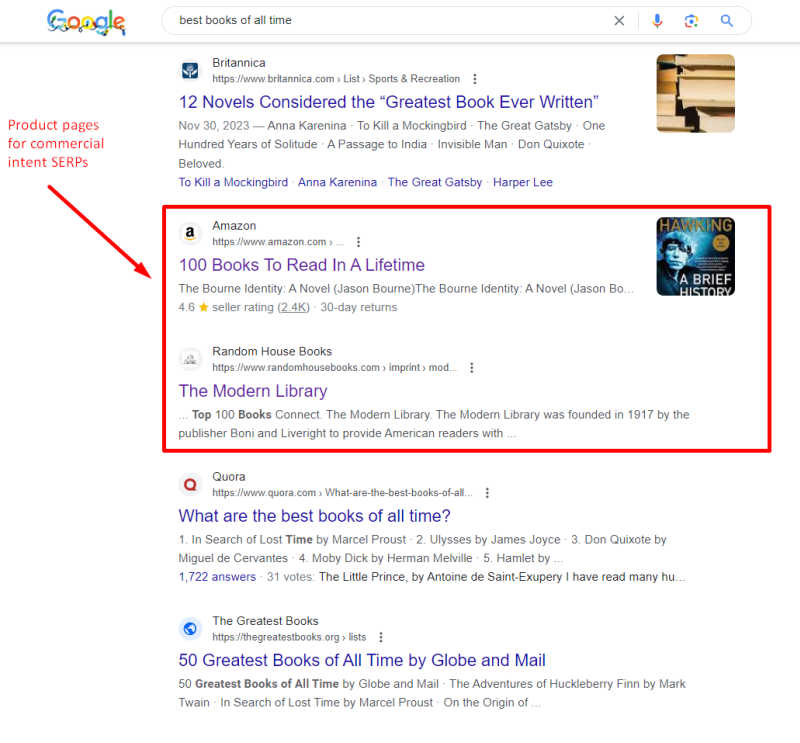
Product pages for commercial intent SERPs.
That’s all that you need about search intent. To do good keyword research and well-targeting audience, you can choose a.o:
- Google Keyword Planner (it’s an entirely free KWs tool),
- Ubersuggest (a very cheap keyword research tool),
- Ahrefs/SEMrush/MOZ (highest-pricing, but the most complex SEO tools).
Let’s discuss the last thing that refers to search intent: SEO importance!
Search Intent – SEO Importance (What Should You Know?)
Search intent is significant when talking about SEO. Without creating relevant content to search queries, you won’t rank on the first page of organic search results. The rest of the SERPs don’t really matter at all because the second page of Google generates 6% of all organic search traffic.
You cannot beat the competitors if you don’t predict the users’ search intent.
To organize your knowledge about search user needs and general search intent, check out part 2 of Search Quality Evaluator Guidelines.
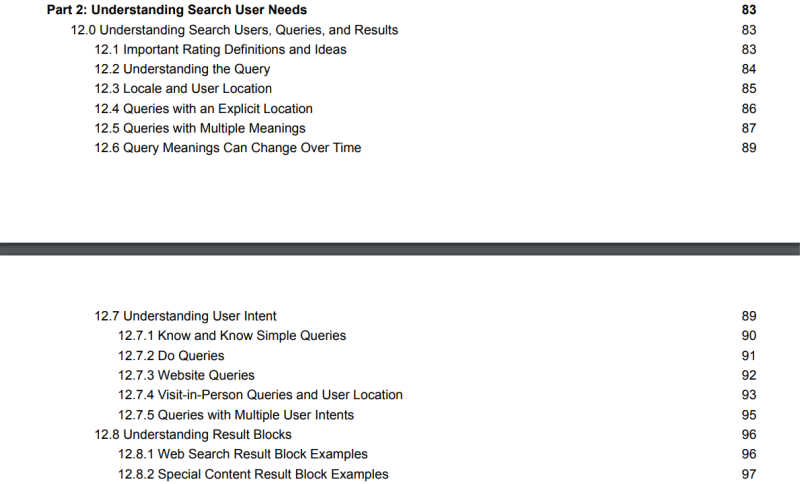
Search Quality Evaluator Guidelines – table of contents.
Final Thoughts
We have a lot of useful knowledge behind us. So, you probably know that the main priority is search intent optimization. Without this, you can’t achieve a competitive advantage and attract more customers than your competitors since your content won’t be able to rank in TOP 10!
Are you really into higher positions at SERPs? Don’t wait for competitors’ moves. Contact us at 888-506-2183 and start SEO (including search intent) with EverEffect specialists. You can also fill out the form to get your free proposal.
Search Intent – FAQs
What are the most common questions and answers about Search Intent?
1. Why do you need to meet the searcher’s intent?
Meeting the audience’s search intent is crucial because it ensures your content aligns with the user’s needs. Accurately satisfying search intent boosts user satisfaction, increasing the likelihood of higher engagement and conversions. For example, if your target audience primarily conducts informational searches, providing relevant content that educates and informs them is critical. Effective SEO strategy leverages keyword research tools to analyze search intent and create content that meets these needs. This approach attracts more traffic and builds trust and authority in your niche.
2. What types of local search intent are most important?
Search engine companies’ most significant search intents are informational, commercial, transactional, and navigational. Navigational search intent is crucial for local businesses as users often search for specific business names or services nearby. For instance, a user typing “best coffee shop near me” indicates a navigational intent. To optimize for local search, include navigational keywords in meta descriptions, landing pages, and content strategy. Ensuring your content satisfies these local search intents can significantly increase your visibility in search results pages.
3. How important is search intent in SEO?
Search intent is a cornerstone of SEO content distribution strategy. Understanding and targeting your users’ intent with relevant keywords and content ensures that your site meets their needs at different stages of their search journey. You can create a more effective content strategy by aligning your content with the four search intents – informational, commercial, transactional, and navigational. This alignment helps rank pages higher in search engines and improves user experience, leading to better engagement and conversions.
4. How does search intent work?
Search intent operates by categorizing user searches into specific categories based on their underlying purpose. When a user types a keyword phrase into the search bar, search engines analyze its intent – informational, navigational, commercial, or transactional. For example, informational intent searches typically involve users looking for answers or information, while transactional searches indicate a desire to make a purchase. By understanding and optimizing for these intents, you can create content that more accurately satisfies users’ needs and ranks higher in search results.
5. What is user search intent?
User search intent refers to the underlying purpose behind a user’s query in a search engine. It’s what the user hopes to find when they type a specific keyword or phrase into the search bar. These intents can be broadly categorized into informational, commercial, transactional, and navigational. Understanding users’ search intent is essential for creating relevant content that addresses their needs. For instance, informational queries usually seek knowledge or data, while commercial investigation queries are more about comparing products or services.
6. How many types of search intent can we stand out?
There are four primary types of search intent: informational, navigational, commercial investigation, and transactional. Informational searches involve users looking for information or answers. Navigational searches are when users search for a specific website or page. The commercial investigation involves users considering a purchase and looking for more information. Lastly, transactional searches are conducted to complete a purchase or another type of transaction. Understanding these different types helps create targeted content that aligns with your audience’s specific needs and stages.
7. Is search intent a ranking factor?
Yes, search intent is a significant ranking factor in SEO. Search engines aim to provide the most relevant results to users, and understanding the intent behind a search query is critical. Creating content that aligns with the user’s intent – be it informational, commercial, transactional, or navigational – increases the likelihood of ranking higher on search results pages. For example, using relevant keywords in your SEO content and targeting keywords that match the same intent as the top-ranking pages can enhance your site’s visibility and attract the right audience.

